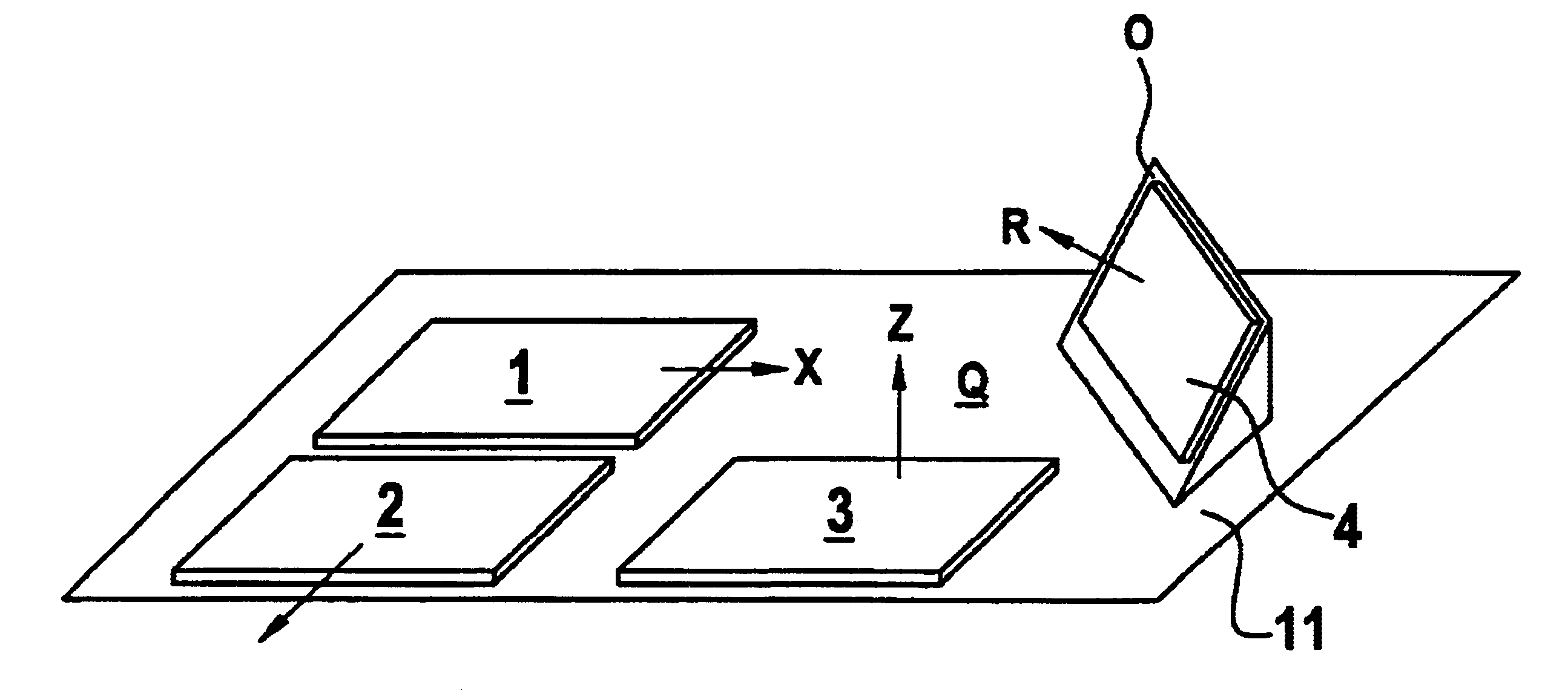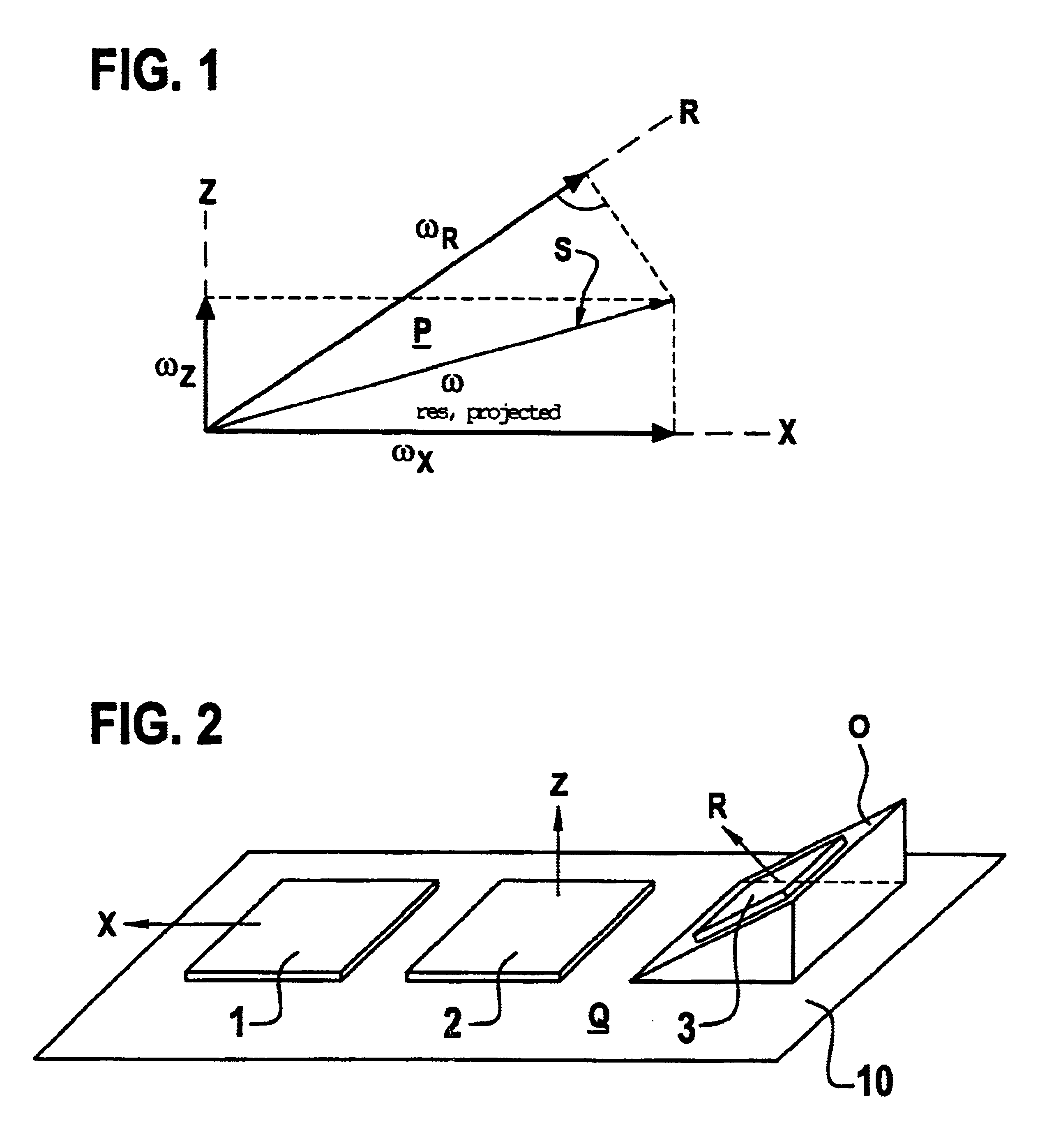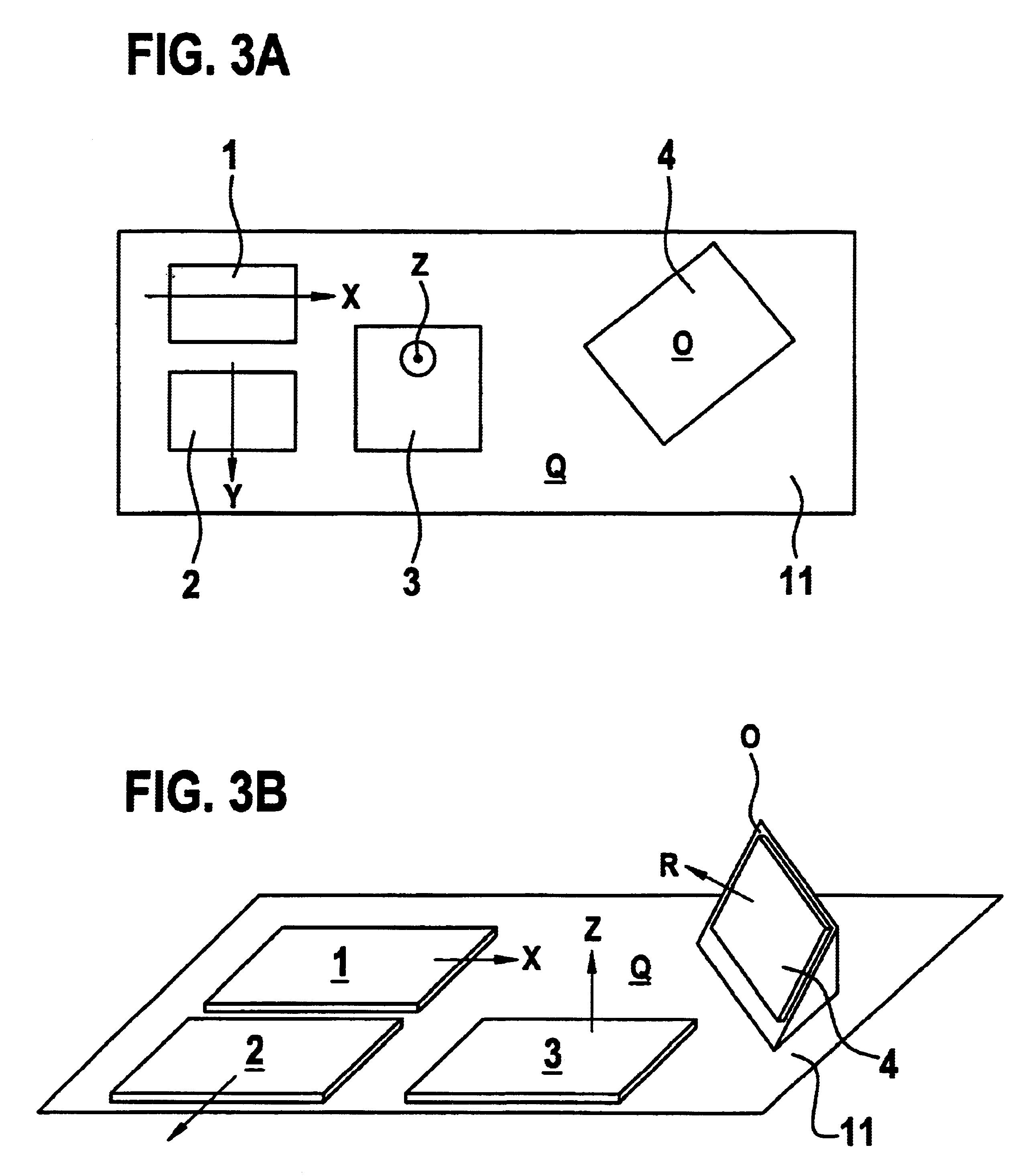Method and system for detecting a spatial movement state of moving objects
a technology for moving objects and states, applied in the field of methods and systems for detecting the spatial movement state of moving objects, can solve the problems of errors in the determination of driving state, restraint systems, navigation systems, previous automotive systems, etc., and achieve the effects of increasing equipment complexity, cost saving, and increasing transparency
- Summary
- Abstract
- Description
- Claims
- Application Information
AI Technical Summary
Benefits of technology
Problems solved by technology
Method used
Image
Examples
Embodiment Construction
[0026]FIG. 1 shows a vector diagram to illustrate a first example embodiment of the method according to the present invention which permits partial detection of the spatial movement state.
[0027]Partial detection of the spatial movement state provides that redundant information may be generated even with a few sensors, e.g., three sensors here, if one is interested only in the movement component in the plane in which the sensors also do their detecting.
[0028]Vector ωX illustrates a first rotational rate vector (angular velocity) which is the detection of the rate of rotation about the longitudinal axis of the vehicle (X axis) in the case of a motor vehicle, such as that detected for rollover applications. A second vector ωZ perpendicular to first vector ωX illustrates the detection of the rotation of a vehicle about the vertical axis (Z axis) using another rotational rate sensor. The detection directions of these two first rotational rate sensors are perpendicular to one another and ...
PUM
 Login to View More
Login to View More Abstract
Description
Claims
Application Information
 Login to View More
Login to View More - R&D
- Intellectual Property
- Life Sciences
- Materials
- Tech Scout
- Unparalleled Data Quality
- Higher Quality Content
- 60% Fewer Hallucinations
Browse by: Latest US Patents, China's latest patents, Technical Efficacy Thesaurus, Application Domain, Technology Topic, Popular Technical Reports.
© 2025 PatSnap. All rights reserved.Legal|Privacy policy|Modern Slavery Act Transparency Statement|Sitemap|About US| Contact US: help@patsnap.com



